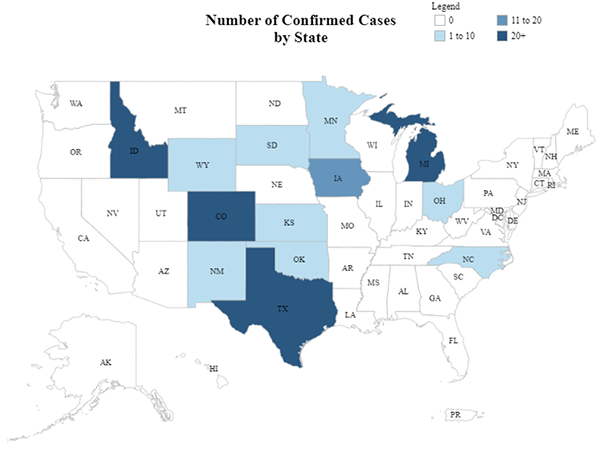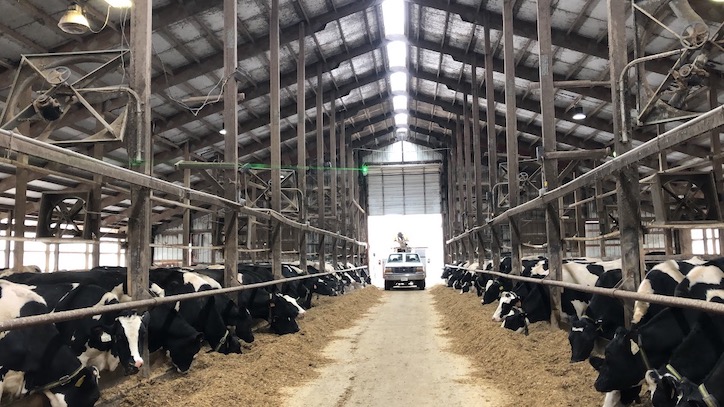Bird Flu Update: H5N1 Continues to Spread Risks to Dairy Herds
Jul 23, 2024
In March 2024, the dairy industry was rattled by the USDA’s confirmation that cases of the highly pathogenic avian influenza (also known as bird flu or H5N1) had been detected in dairy cows in two states. As of July 15, the USDA has confirmed outbreaks of H5N1 in 158 dairy herds across 13 states.
The spread of the disease hasn’t shown any signs of slowing – which underscores the importance of continued vigilance and increased biosecurity on dairy farms.
Bird Flu’s Effect on Dairy Farms
A single, positive bird flu case in a herd can result in business interruptions and direct revenue losses for dairy farmers.
One infected cow can easily spread the disease among its herd. Because of this, it is recommended that symptomatic cows be isolated for 30 days to decrease the risk of transmission. If a cow tests positive for bird flu, lactating cattle from its herd are ineligible for interstate movement for 30 days. Further, any milk produced by infected or symptomatic cows must be destroyed or diverted from the commercial food supply.
The Risks Posed by Wild Birds
Annually, between September and November, over 330 million wild birds are in flight during peak migration season. Some of these birds may be infected with bird flu, and their presence on dairies can increase the risk of transmission among cattle. When wild birds congregate, their fecal droppings may accumulate and contaminate a herd’s feed and water.
The birds dairy farmers should monitor for with particular vigilance include:
- Larger, migratory birds such as Canada geese, snow geese, swans, and multiple wild duck species
- Smaller, wild birds such as pigeons and starlings
Solutions for Fall Migration
To protect their herds, dairy farmers should strive to deter wild birds from their property on a continuous basis. While the right solution may be different for each farm, one deterrence solution has a near universal track record of success: lasers.
These lasers – which are exclusively designed to deter birds– can disperse wild birds without harming them or the environment. They maybe deployed as needed via handheld laser, or continuously with an automated version. The benefits of bird lasers include:
- Wide Coverage & Range: a laser beam can travel over 1,000 yards and cover multiple acres in minutes
- Constant Motion: automated lasers can operate for 24 hours, 7 days a week, with little maintenance
- Variable Patterns: automated lasers include custom programs for each site, with varying timeslots and speeds, so the birds do not habituate
Below is a recent example of how one dairy farm leveraged laser technology to protect its herd from bird flu.
Prevent Bird Flu on Dairy Farms With Lasers
In April 2024, a multi-generation, family-owned farm in the Midwest partnered with Migratory Bird Management (MBM) to help mitigate the risk of bird flu transmission among their herd of nearly 3,000 dairy cattle.
The farmers were concerned that the presence of large, migratory birds such as Canada geese as well as smaller, wild birds such as pigeons, would expose their herd to bird flu. MBM designed a comprehensive bird management program leveraging both automated and handheld lasers to ensure consistent coverage of the main problem areas. The lasers were installed and deployed in both indoor and outdoor settings. Within one month of implementation, the observed wild bird population decreased by over 95%.

Protect Your Herd with Migratory Bird Management
Since 2015, Migratory Bird Management has helped hundreds of customers in the agriculture industry manage their nuisance bird problems with automated lasers.
Contact us to schedule a site evaluation, or to learn how lasers can strengthen biosecurity on your dairy farm.




 0
0
